2. The Energetic Universe
The study of the Energetic Universe will encompass the study of all compact and extremely energetic objects in the sky, going from neutron stars, ultra-luminous X-ray sources (ULXs), stellar-mass black holes, Gamma-Ray Bursts (GRBs), and Active Galactic Nuclei (AGN). Extreme accretion and ejection phenomena related to either accretion disks, accretion disk winds, ultra-fast outflows, or relativistic jets are commonly seen in these objects and will clearly require further exploration in the years to come.
There is now compelling evidence that AGN radiation, winds, and jets may even have had a dominant role in shaping the observed co-evolution, from the local Universe, between supermassive black holes and their host galaxies. How and when this feedback started is a great question of modern astrophysics that embraces both relativistic astrophysics and galaxy evolution. Other important, yet unanswered, questions relate to how and where are these processes formed and accelerated.
The X-IFU has a unique energy resolution (above 2.5 eV over a 0.1-7 keV energy band), combined with defocused capabilities, to observe bright targets, and fast repointing capability. It was thus designed to be able to tackle these issues in both nearby and bright sources, (X-ray binaries, Seyfert galaxies, etc.) as well as distant and faint sources (ULXs, AGNs, GRBs).
High-redshift Gamma-ray Bursts: early metal enrichment of the Universe
During the birth phase of the Universe, almost only hydrogen and helium atoms were produced. Nowadays, we see a large number of heavier elements amounting up to 0.1% of the total number of atoms in the Universe. These metals must have formed in the earliest generation of stars, and have played a crucial role in the further evolution of all cosmic objects, as seeds for further chemical evolution and as active constituents ruling the physics of their host objects.
The first generation of stars are difficult to observe due to the large distances and faintness of the proto-galaxies. However, gamma-ray bursts (GRBs) are extremely energetic explosions. At high redshift, they probe the pristine conditions around the earliest star-forming regions. Due to their enormous brightness and visibility out to very large distances, the burst of non-thermal gamma-ray and X-ray emission from GRBs offers a perfect continuum spectrum against which all intervening material between the GRB and the observer can produce narrow X-ray absorption lines.
This intervening material could be anywhere. When the GRB progenitor has left a shell of ejected material, the GRB light will first probe this ejected material and its physical conditions. Next, it may probe the star-forming region or (proto-)galaxy where the event has occurred, and finally the relevant part of the cosmic web or its knots where the galaxy resides.
In each region, the absorption lines will allow us to investigate the relative abundances of the elements. Once combined with the models for nucleosynthesis of several types of stars and the evolution of the corresponding environments, they will reveal how, where, and when the first metals were formed.
The X-IFU is well-suited for such studies. The high redshifts of the GRBs considered here will shift the most important metal lines to the band around and below 1 keV energy, where it has a high enough spectral resolution and its maximum effective area. Combined with a fast-enough slew to the target, it will guarantee an excellent diagnostic spectrum of a high quality.
- Associated Mission Design Science Objective (MDSO) : “Multi-messenger astrophysics”
AGN and Star formation driven winds and outflows
The intimate link between a central supermassive black hole (SMBH) and its host galaxy properties calls for self-regulating feedback mechanisms connecting different spatial scales, from the innermost regions dominated by the SMBH gravity out to the largest galactic scales beyond the gravitational influence of the SMBH. Gas flows in the form of energetic winds, and jets, are likely to play a crucial role in the process.
Ultra-fast outflows driven by active galactic nuclei (AGN) can potentially drive large scale winds and provide this connection. Stellar-related phenomena are also known to drive galactic winds through which energy and metals are distributed in galaxies. Current theoretical models and numerical simulations identify galactic outflows as key ingredients for the growth and evolution of galaxies and black holes, and a full understanding of both AGN- and star-formation-driven outflows, as well as of their interplay, is much needed.
Studying exactly if, how, and where the vast amount of energy that is carried by AGN-driven outflows is actually transported from the sub-parsec to the kiloparsec scale is one of the major challenges in the field. The interaction of these outflows with the surrounding medium, the interplay between AGN and stellar processes in driving galactic winds, and even the launching mechanism(s) of AGN outflows are also still largely unknown.
Current X-ray observatories have started to assemble a basic view of ultra-fast AGN outflows. The X-IFU will provide a gigantic step forward with extremely accurate measurements in a representative and statistically rich sample of local AGN and star-forming galaxies. These will deliver tight physical constraints on the outflows mass content, energetics, dynamics, and intrinsic timescales, thus clarifying their ultimate launching mechanism and contribution to feedback at large, as well as providing crucial templates for interpreting high redshift surveys.
The X-IFU will spatially resolve and spectrally map the most important nuclear and extended X-ray emission components in nearby active galaxies (e.g., AGN and luminous/ultra-luminous infrared galaxies), allowing us to probe directly the AGN and star-formation interplay in the X-ray band.
- Associated Mission Design Science Objective (MDSO) : “Determine how outflows are launched from around supermassive black holes and how they impact the evolution of galaxies since Cosmic Noon”
Supermassive black hole spins
A black hole is a location of spacetime where the strength of gravity is so strong that not even light can escape. It is fully described by two parameters, its mass and its spin. While there are several ways to determine the mass (e.g., gravitational lensing), measuring its spin is fundamentally more complicated as it only influences the immediate space-time surrounding the black hole. Despite this confined range of influence, the spin of supermassive black holes (SMBHs) is a key ingredient in studying far-reaching phenomena such as the ejection of powerful jets from the accreted matter around the black hole.
The main effect of the black hole spin on the gas in its vicinity is that it determines how close to the black hole the accretion disk can extend. A rapidly rotating black hole drags space-time with it and allows the accretion disk to get much closer to its outer edge, called the event horizon, than in the case of a non-spinning black hole. Radiation from the primary source of X-rays, the hot corona, is reflected by the inner part of the accretion disk and gets distorted by light-bending effects, Doppler boosting, and gravitational redshift. As these effects increase the closer the disk reaches to the event horizon, the observed reflection spectrum gets increasingly distorted and red-shifted for a faster black hole rotation (see figure for an illustration).
In the case of SMBHs, such reflection distorted by relativistic effects is routinely detected in, for instance, Narrow-Line Seyfert galaxies. The major obstacles to reliable measurements of an SMBH spin are the absorption from a highly-ionised wind, and the partial obscuration by clouds that strongly alters the reflected spectrum.
Due to its superior energy resolution, the X-IFU will be able to routinely and easily disentangle these absorbed outflows from the intrinsic reflection spectrum originating from just outside the black hole’s event horizon. In combination with the large collection area of the NewAthena mirror, the X-IFU will therefore allow for very robust spin estimates.
- Associated Mission Design Science Objective (MDSO) : “Determine the location and nature of the primary source of X-rays and its connection to the inner accretion/ejection mechanisms in AGN and stellar compact objects”



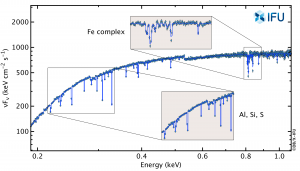
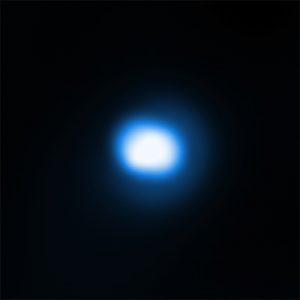
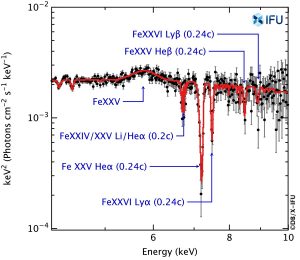
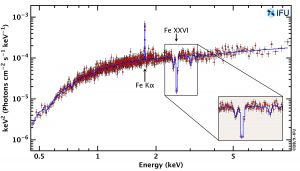
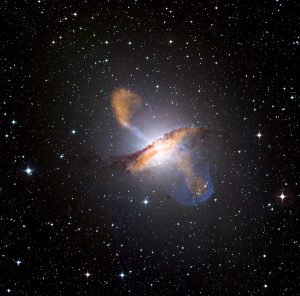
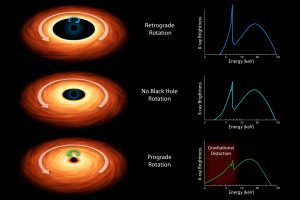
 Youtube
Youtube